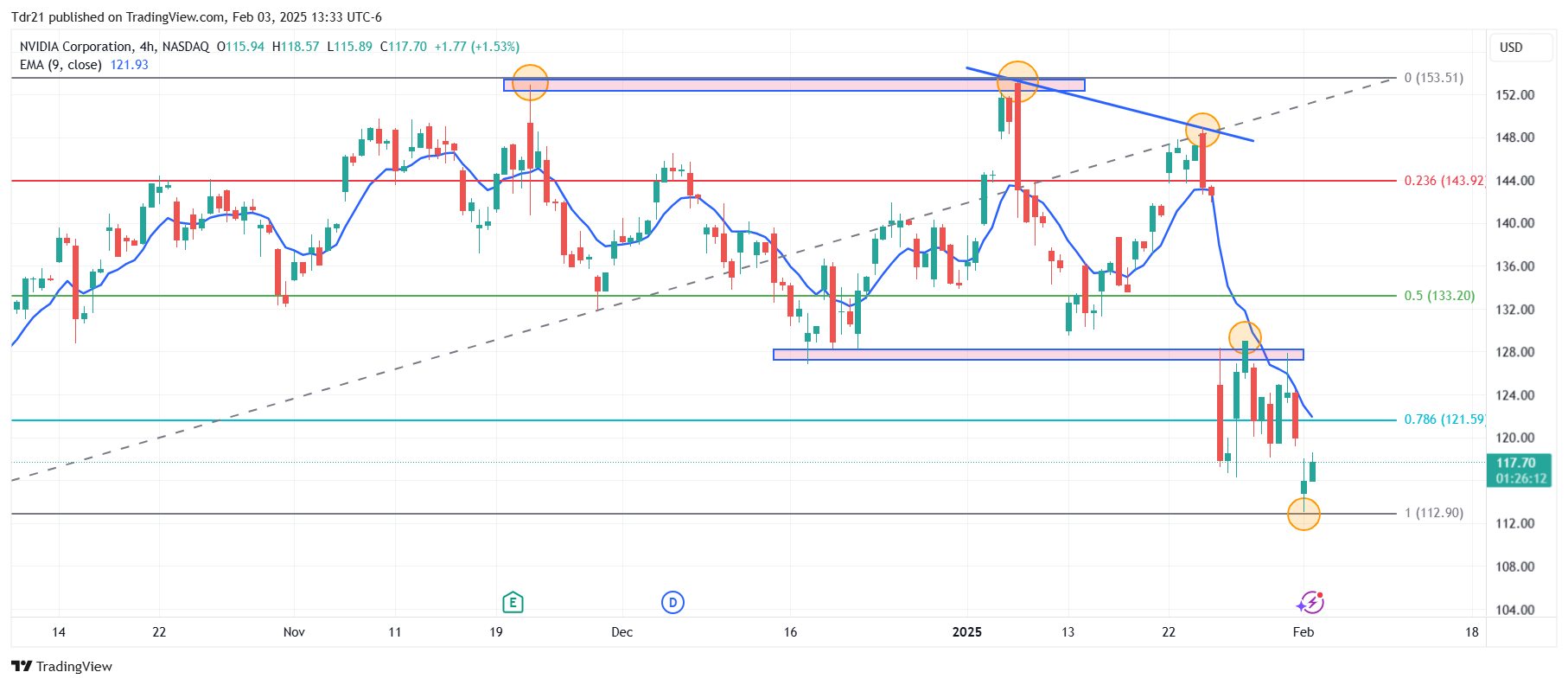- NVIDIA (NVDA) loses 1.81% today, reaching minimums not seen since September 11, 2024 at $ 113,01.
- NVDA has partially recovered after the tariff suspension of a month to Mexico, although threats persist.
The titles of Nvidia (NVDA) established a daily maximum at $ 117.99, attracting vendors that dragged the price of the minimum share of more than four months not seen since September 11, 2024 at 113.01 $. At the time of writing, NVDA operates about $ 117.91, losing 2.62% daily.
Donald Tump’s tariff narrative drags Nvidia values to a minimum of more than four months
The leading company in manufacture, development and marketing of graphic processors, NVIDIA (NVDA), presents a drop in the price of its shares of 1.81% today, currently operating at $ 117.91.
The fall of NVDA is after the tariff imposition of 25% to Mexico on Saturday, February 1. However, today it has been announced that tariffs to Mexico are suspended for a month when they reach an agreement to avoid drug traffic.
After this news, the titles have been reacted upwards from minimums not seen since September 11, 2024 at $ 113,01, partially recovering until reaching a daily maximum at $ 118.57.
The focus of investors remains in the NVDA profit report, to be released on February 26. The Consensus of analysts projects income for 38.02 billion dollars and a gain per share of 0.845 $.
Technical levels of NVIDIA
The Nvidia titles reacted down from a short -term resistance given by the maximum of January 28 at $ 129.00. The next key resistance is observed at $ 148.97, maximum of January 24. Down, the important support is observed at $ 113.01, minimum of February 3.
NVDA 4 hours chart

FAQS semiconductor actions
A semiconductor is a term used to refer to various types of computer chips. Officially called semiconductor devices, these computer chips are based on semiconductor materials such as silicon and Gallium arseniuro to process the electric current produced by the modern world of computer science. They come in many forms, sizes, improvements and configurations, such as diodes, transistors and integrated circuits, even more complex applications such as dram memory, simple processors and even GPU.
First, there are pure chip designers, such as Nvidia, AMD, Broadcom and Qualcomm. These companies use sophisticated software to design and try chips. Secondly, there are equipment manufacturers that provide the necessary machines to build computer chips. Among them are Asml and Lam Research. Then there are the foundations that manufacture the chips. Among them are Taiwan Semiconductor and Globalfoundries. Finally, there are manufacturers of integrated devices that design their own chips and, in addition, they are manufactured them. Among them are Samsung and Intel.
This is the observation that the number of transistors in an integrated circuit doubles every two years. The “Law” receives its name from Gordon Moore, founder of Fairchild Semiconductor and, subsequently, of Intel. Duplication is possible due to the reduction of process nodes or computer chip parts. In 1971, advanced commercial manufacturing had reached 10 microns wide. In 1987, semiconductor technology had advanced up to 800 nanometers wide. In 1999, this process had advanced until 180 nanometers. In 2007, the size had descended to 32 nanometers, and in 2022 it was reduced to the 3 nanometers, which approaches the size of the human DNA.
In 2022, the world semiconductor industry had income of just under 600 billion dollars. In total, the industry sent 1.15 billion semiconductor units in 2021. The main countries that participate in the semiconductor supply chain are Taiwan, the United States, China, Netherlands, South Korea, Japan and Israel.
Source: Fx Street
I am Joshua Winder, a senior-level journalist and editor at World Stock Market. I specialize in covering news related to the stock market and economic trends. With more than 8 years of experience in this field, I have become an expert in financial reporting.







